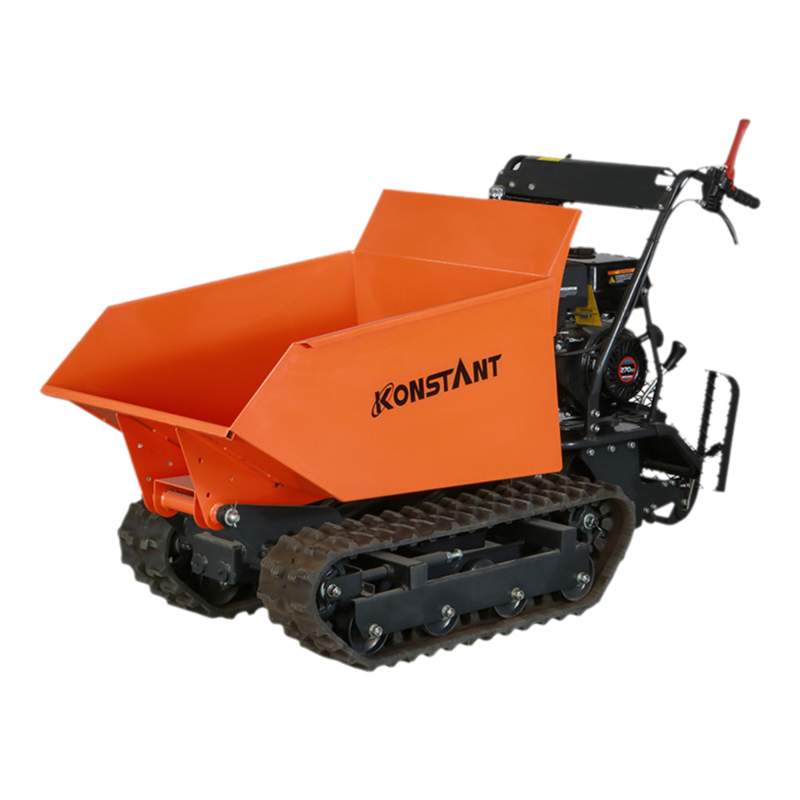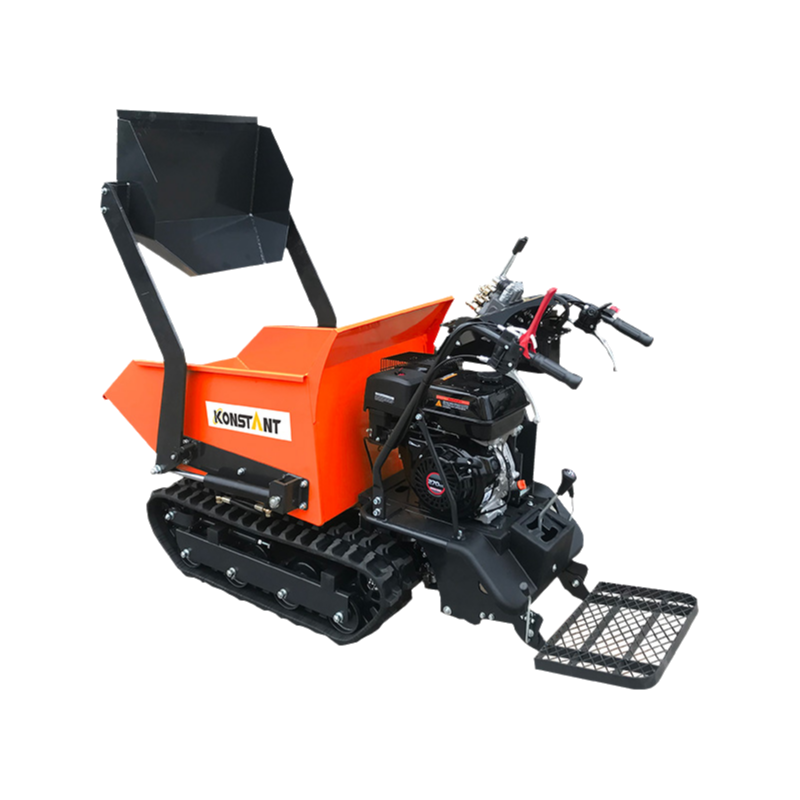Provide you with the latest enterprise and industry news
What is an Electric Skid Steer?
Posted by Admin
What is an Electric Skid Steer?
An electric skid steer is a compact, battery-powered construction machine designed for digging, lifting, grading, and moving materials across a wide range of job sites. Unlike traditional skid steers powered by diesel or gasoline engines, electric skid steers run on electric motors fueled by rechargeable batteries. This modern alternative brings significant advantages in energy efficiency, environmental impact, and operational noise.
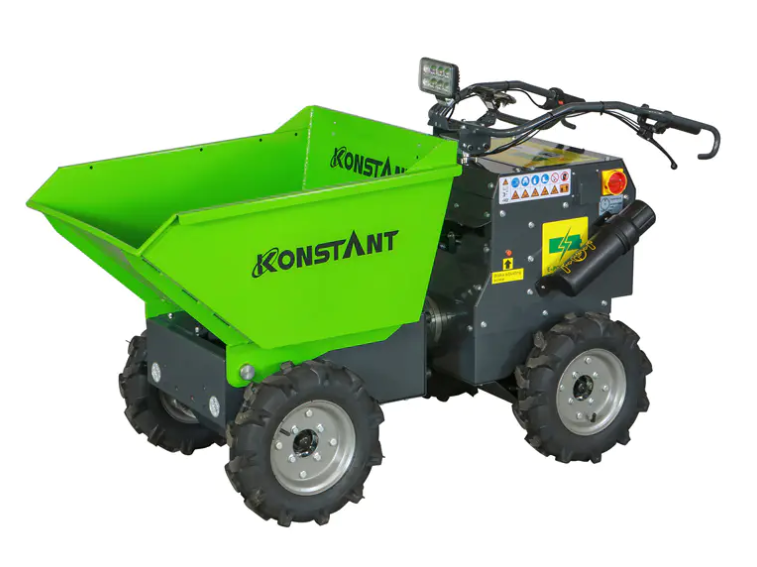
Why More People Are Talking About Electric Skid Steers
Electric skid steers have become one of the most talked-about innovations in the construction and machinery world. Once considered a niche solution, these machines are now gaining serious traction across industries ranging from construction and agriculture to landscaping and municipal services. The growing interest is fueled by environmental concerns, rising fuel costs, and advancements in electric technology.
Cleaner and Greener Operation
One of the most compelling reasons people are turning their attention to electric skid steers is their eco-friendly performance. Unlike traditional diesel-powered models, electric skid steers operate with zero emissions. This makes them ideal for indoor use, urban environments, and locations with strict air quality regulations.
As governments and industries around the world set ambitious carbon-reduction goals, electric equipment offers a practical way to reduce the environmental footprint of everyday operations. Electric skid steers contribute directly to sustainability targets without compromising performance in most light to medium-duty applications.
Lower Noise Levels
Noise pollution is a serious concern on many job sites, especially in residential areas or enclosed workspaces. Electric skid steers operate much more quietly than their combustion-engine counterparts, allowing for extended working hours without disturbing nearby communities or workers.
This quiet operation is not only appreciated by clients and neighbors—it also creates a safer and more comfortable environment for operators. Reduced noise can improve focus and communication, ultimately enhancing job site efficiency.
Reduced Operating Costs
Electric skid steers typically come with lower daily operating costs. They don't require fuel refills, oil changes, or as much routine maintenance. With fewer moving parts and less mechanical wear and tear, maintenance intervals are often longer and repair costs lower over time.
While the upfront cost of an electric machine may be higher, the return on investment becomes more attractive when factoring in reduced fuel and service expenses over the machine’s life cycle.
Technology-Driven Performance
Today's electric skid steers are equipped with modern features such as digital control panels, programmable settings, and advanced safety systems. These enhancements provide smoother operation, better load management, and increased productivity on the job site.
Some models also include regenerative braking systems that help recharge the battery during operation, extending runtime and increasing efficiency.
Ideal for Indoor and Sensitive Environments
Because they produce no exhaust and minimal noise, electric skid steers are especially well-suited for:
Warehouses and indoor demolition
Agricultural buildings like barns or greenhouses
Food processing environments
Hospitals and schools under renovation
Public parks or pedestrian zones
These machines can enter areas that would be off-limits to traditional equipment, allowing crews to complete work safely and efficiently.
Changing Industry Mindsets
The conversation around electric skid steers reflects a broader shift in how industries approach equipment selection. Contractors, fleet managers, and business owners are no longer just asking about power and performance—they're asking about sustainability, long-term cost, and environmental compliance.
This shift in mindset is driving demand for equipment that aligns with both performance needs and modern values.
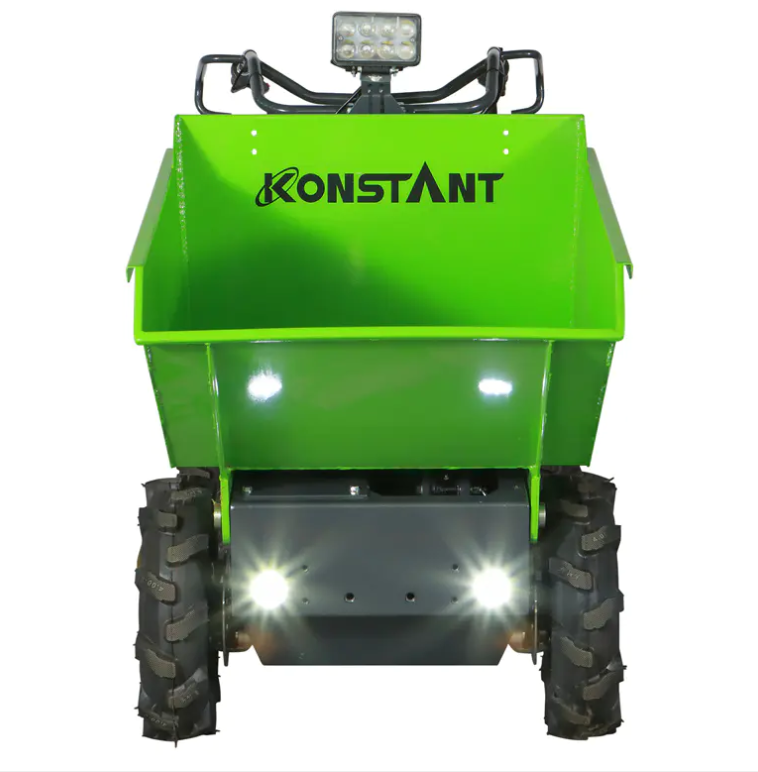
Key Features of Electric Skid Steer?
1. Zero Emissions
Electric skid steers produce no exhaust fumes during operation. This makes them ideal for indoor applications, such as warehouses, greenhouses, and tunnels, as well as in environmentally sensitive areas.
2. Quiet Operation
The electric motor operates much more quietly than a combustion engine, which benefits operators and reduces noise pollution in residential zones or enclosed spaces.
3. Low Operating Costs
Since there are fewer moving parts and no need for fuel, maintenance is generally simpler and cheaper. Electricity is also more cost-effective than diesel in most regions, contributing to long-term savings.
4. Instant Torque Delivery
Electric motors provide instant torque, offering strong and responsive performance. This means better control during precise tasks such as grading or trenching.
5. Easy Controls and Digital Monitoring
Many electric skid steers come with intuitive control systems, touchscreen interfaces, and smart diagnostics, making them easier to operate and maintain.
Typical Applications
Electric skid steers are used in a wide variety of industries, including:
Construction – For indoor demolition, material handling, and concrete work.
Agriculture – To clean barns or transport feed with minimal disturbance.
Landscaping – For turf-friendly and quiet performance near homes or parks.
Warehousing & Logistics – Where clean and quiet operation is essential.
Municipal Projects – For tasks in noise-sensitive or emission-restricted areas.
Types of Electric Skid Steers
As electric skid steers gain popularity across industries, the range of available models is also expanding. Today’s market offers several types of electric skid steers tailored to different applications, power needs, and working environments. Understanding the differences between them is key to selecting the right machine for your operations.
1. Fully Electric Skid Steers
Fully electric skid steers are powered exclusively by rechargeable batteries and electric motors. They offer zero emissions, quiet operation, and high efficiency. These models are ideal for indoor use or in environmentally sensitive areas where diesel engines are not allowed.
Key Features:
Battery-powered drivetrain
Emission-free operation
Typically run for 4–8 hours per charge
Minimal maintenance required
Best For:
Indoor demolition
Warehouse material handling
Enclosed construction sites
Green construction projects
2. Compact Electric Skid Steers
These are smaller versions of standard electric models, designed for tight or limited-access spaces. Compact electric skid steers offer the same eco-friendly and quiet performance in a smaller footprint, making them easier to maneuver in narrow corridors, doorways, or tight job sites.
Key Features:
Narrow width and shorter wheelbase
Lightweight and easy to transport
Lower power output, but sufficient for light-duty work
Best For:
Interior renovation
Landscaping in confined spaces
Agricultural buildings with tight pathways
3. High-Capacity Electric Skid Steers
High-capacity electric models are built for tougher jobs and longer work cycles. They often feature larger battery packs, stronger motors, and enhanced hydraulic systems. These machines are designed to match or exceed the power of traditional diesel units while maintaining the benefits of electric operation.
Key Features:
Extended battery runtime
Higher lift and breakout force
Suitable for medium to heavy-duty workloads
Best For:
Outdoor construction projects
Municipal maintenance work
Multi-shift operations with fast charging capability
4. Electric Skid Steers with Quick-Change Attachments
Some electric skid steers are built to support a wide range of quick-attach tools, such as augers, trenchers, sweepers, pallet forks, and snow blowers. These machines are versatile and commonly used in industries that require tool changes throughout the day.
Key Features:
Compatible with multiple hydraulic and non-hydraulic attachments
Enhanced control systems for managing various tools
Time-saving design for multi-task operations
Best For:
Landscaping and groundskeeping
Light construction and property maintenance
Utility work and seasonal tasks
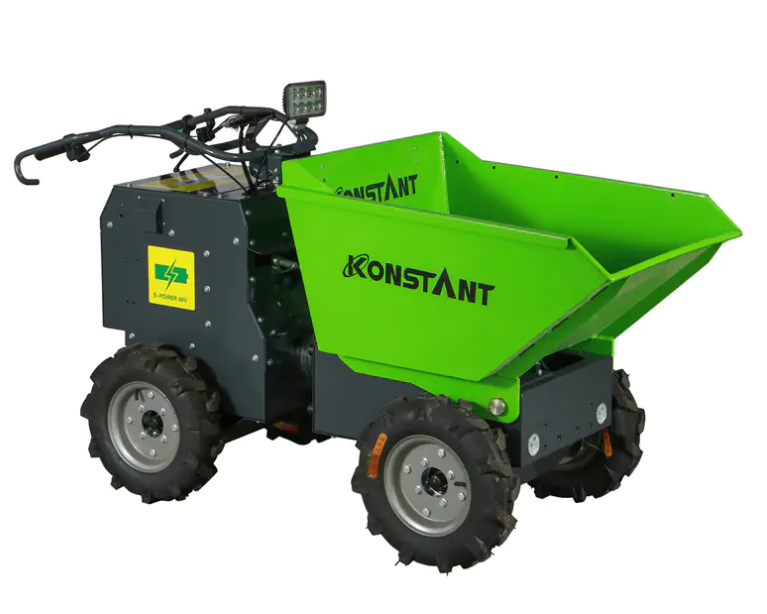
How to Choose an Electric Skid Steer
Choosing the right electric skid steer isn't just about picking the latest model—it's about finding a machine that aligns with your job requirements, work environment, and long-term operational goals. Whether you're replacing older equipment or building a new fleet, making a well-informed decision will help ensure maximum productivity and return on investment.
Here's a step-by-step guide to help you make the right choice:
1. Define Your Primary Tasks
Start by identifying what the skid steer will be doing most often. Are you lifting heavy materials, performing demolition work, clearing debris, or managing light landscaping tasks? Different machines offer varying levels of power, hydraulic output, and load capacity, so understanding your core applications is key.
Tip: Prioritize lifting capacity, breakout force, and auxiliary power based on your most demanding task—not just the average job.
2. Assess Your Operating Environment
Your job site will significantly influence the type of electric skid steer you need. Indoor environments may call for compact, low-profile models with minimal noise and zero emissions. Outdoor or rough-terrain applications may require higher ground clearance and better traction systems.
Tip: Match tire type, weight distribution, and machine width to the physical conditions of your typical job site.
3. Evaluate Runtime and Charging Options
Battery life is a central factor when selecting an electric model. Some units are designed for light-duty, short-shift applications, while others support longer workdays with higher-capacity battery packs or rapid charging capabilities.
Tip: Estimate your daily usage hours and determine whether a standard charge cycle will meet your needs. If not, explore machines that offer fast-charging or battery-swapping options.
4. Check Attachment Compatibility
If your operations rely on a wide range of tools—such as augers, grapples, or snow blowers—ensure the machine is designed for quick attachment changes and has the required hydraulic output. Versatility is a major advantage when using one machine for multiple tasks.
Tip: Make sure the coupler system is compatible with your existing attachments or allows for future tool upgrades.
5. Consider Ease of Transport and Storage
If your equipment needs to be moved frequently between sites, weight and size become important factors. Some electric models are more compact and easier to transport, making them ideal for contractors who work across multiple locations.
Tip: Confirm the dimensions and transport weight to ensure compatibility with trailers or storage areas.
6. Factor in Total Ownership Costs
While electric skid steers may have a higher initial cost, they often result in lower long-term expenses thanks to savings on fuel, maintenance, and downtime. Evaluate not just the purchase price, but also the expected cost over the machine's entire life cycle.
Tip: Create a cost comparison chart that includes fuel savings, service intervals, repair frequency, and projected lifespan.
Electric vs Diesel Skid Steer: Which One Is Right for Your Job Site?
As electric skid steers continue to gain popularity, many contractors and equipment managers face an important decision: stick with traditional diesel-powered machines or transition to electric models. Each type of skid steer has its own strengths, and choosing the right one depends largely on the nature of your worksite, budget, and long-term goals.
Let's explore how electric and diesel skid steers compare across several key factors.
1. Environmental Impact
Electric skid steers operate with zero emissions, making them ideal for indoor environments, green construction projects, and urban zones with strict air quality regulations. They help companies align with sustainability goals and reduce their carbon footprint.
Diesel skid steers, on the other hand, emit exhaust gases and may not be allowed in enclosed or emission-restricted areas. However, they remain widely used for outdoor and remote projects where emissions are less of a concern.
2. Noise Levels
Electric models are significantly quieter than diesel ones, which improves operator comfort and makes them suitable for noise-sensitive environments such as schools, hospitals, or residential neighborhoods.
Diesel machines generate considerable engine noise, which can be disruptive and limit usage during certain hours or in quiet zones.
3. Power and Performance
Diesel skid steers traditionally offer higher power output and are well-suited for heavy-duty operations, especially in demanding terrain or extended outdoor work.
Electric skid steers have improved significantly in recent years and now offer solid performance for light to medium-duty jobs. While battery technology is advancing, some high-load or long-hour applications may still favor diesel.
4. Operating Costs
Electric models have lower operating costs due to the absence of fuel expenses and reduced maintenance. Fewer moving parts mean less wear and fewer repairs over time.
Diesel models require regular fueling, oil changes, filter replacements, and more frequent servicing, which can lead to higher lifetime operating costs.
5. Runtime and Refueling
Diesel machines can run continuously as long as fuel is available, which makes them ideal for multi-shift operations or remote worksites.
Electric models are limited by battery capacity, often running for 4–8 hours before needing a recharge. Charging infrastructure and downtime must be considered in planning.
6. Upfront Investment
Electric skid steers typically come with a higher purchase price due to battery and motor technology. However, this cost can be offset by long-term savings.
Diesel skid steers are generally less expensive to purchase initially but may incur higher fuel and maintenance costs over time.
Summary Table: Electric vs Diesel Skid Steers
| Feature | Electric Skid Steer | Diesel Skid Steer |
|---|---|---|
| Emissions | Zero emissions; eco-friendly | Produces exhaust; not suitable for indoor use |
| Noise Level | Quiet operation | Loud engine noise |
| Power & Performance | Suitable for light to medium-duty tasks | Stronger power for heavy-duty applications |
| Operating Costs | Lower over time; minimal maintenance | Higher fuel and maintenance costs |
| Runtime & Refueling | Limited by battery; needs charging | Long runtime; quick refueling |
| Upfront Cost | Higher initial cost | Lower initial cost |
| Best Suited For | Indoor, urban, green, or noise-sensitive sites | Outdoor, remote, and heavy-load work |
How to Maintain Your Electric Skid Steer: Tips for Longer Battery Life
Investing in an electric skid steer is a smart move toward cleaner, quieter, and more cost-efficient operations. However, to ensure long-term performance and protect your investment, proper maintenance is essential—especially when it comes to battery care. The battery is the heart of an electric skid steer, and with the right practices, you can maximize its lifespan and keep your machine running reliably for years.
Below are key maintenance tips to keep your electric skid steer in top condition and extend its battery life.
1. Follow Proper Charging Habits
One of the most important factors in battery health is how and when you charge it. Avoid letting the battery completely discharge on a regular basis, and try not to leave it at 100% charge for extended periods when not in use.
Tip: Maintain charge levels between 20% and 80% during daily operations for optimal long-term performance.
2. Use the Correct Charger
Always use the charger recommended by the manufacturer. Incompatible or makeshift charging equipment can lead to battery damage, overheating, or even reduced efficiency over time.
Tip: Ensure your charging station is clean, dry, and ventilated to prevent overheating during the charging cycle.
3. Inspect Battery Connections Regularly
Loose, dirty, or corroded connections can impair performance or create unsafe conditions. It’s essential to check all battery terminals and wiring regularly and keep them clean and properly fastened.
Tip: Use a dry cloth or a soft brush to clean battery terminals. Avoid using metal tools or liquids that could short the system.
4. Monitor Battery Temperature
Extreme heat or cold can negatively affect battery performance and lifespan. If your machine is frequently used in harsh climates, invest in insulation or climate-controlled storage.
Tip: Never charge a battery that is extremely cold or hot. Allow it to return to a moderate temperature before charging.
5. Keep the Battery Dry and Protected
Moisture, dust, and debris can lead to corrosion or short circuits. Always park the machine in a covered or indoor location when not in use, and avoid exposure to rain or standing water.
Tip: After wet or dusty workdays, clean the battery housing area before charging.
6. Perform Software and Firmware Updates
Some electric skid steers feature smart battery management systems. Keeping this software updated ensures accurate performance readings and helps the system protect the battery from overuse or incorrect charging behavior.
Tip: Schedule regular system checks as part of your overall maintenance routine.
7. Avoid Overloading the Machine
Consistently pushing your skid steer to its maximum load capacity can drain the battery faster and put stress on the powertrain. Operate the machine within recommended limits to maintain battery efficiency.
Tip: If your tasks frequently involve heavy lifting, consider a model with a higher power rating to prevent unnecessary strain.
Summary Table: Electric Skid Steer Battery Maintenance Tips
| Maintenance Tip | Purpose | Best Practice |
|---|---|---|
| Proper Charging Habits | Prevents deep discharge or overcharging | Keep battery between 20%–80% daily |
| Use the Correct Charger | Ensures safe and efficient charging | Use only manufacturer-recommended equipment |
| Inspect Battery Connections | Avoids power loss or safety risks | Clean and tighten terminals regularly |
| Monitor Battery Temperature | Protects from heat or cold damage | Charge only at moderate temperatures |
| Keep Battery Area Clean & Dry | Prevents corrosion and electrical issues | Store indoors; clean after wet/dusty use |
| Update Software/Firmware | Optimizes performance and safety features | Regularly check for system updates |
| Avoid Machine Overloading | Preserves battery capacity and reduces strain | Stay within recommended load limits |
How Eco-Friendly Are Electric Skid Steers Really?
Electric skid steers have quickly become a favorite among those looking to adopt more sustainable practices in their construction, landscaping, and agricultural projects. The zero-emissions advantage and quieter operation make them seem like an ideal environmentally friendly solution. But how eco-friendly are they in practice, when we consider the full life cycle of the equipment?
Let's break down the environmental impact of electric skid steers and see how they stack up against traditional diesel-powered models.
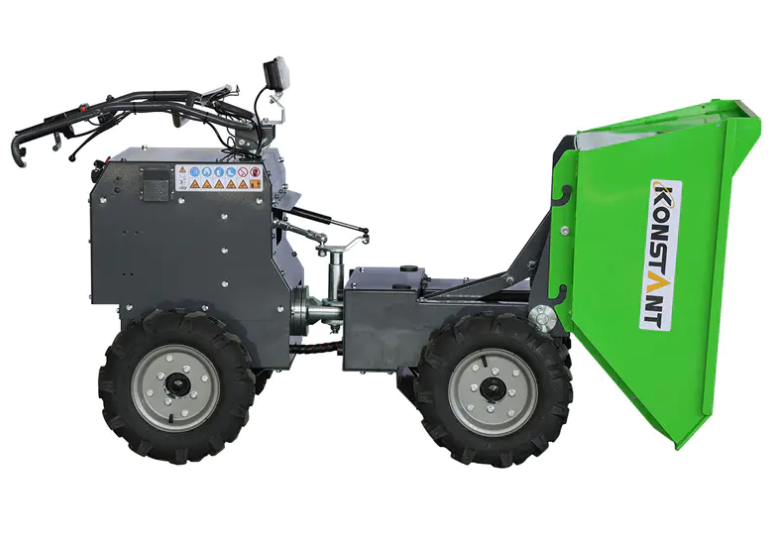
1. Zero Emissions During Operation
One of the most significant environmental benefits of electric skid steers is that they produce zero tailpipe emissions. Unlike diesel models, which release pollutants like carbon monoxide, nitrogen oxides, and particulate matter, electric skid steers do not contribute to air pollution while in operation. This is especially important for jobs in cities, indoors, or in areas with strict emissions regulations.
Benefit: This not only improves air quality but also reduces health risks for operators and nearby workers in confined spaces or urban areas.
2. Reduced Noise Pollution
Electric skid steers operate significantly quieter than their diesel counterparts. Noise pollution is an often-overlooked environmental issue, especially in urban and residential areas where loud machinery can disrupt communities.
Benefit: With lower noise levels, electric skid steers improve working conditions, reducing hearing damage risk for operators and minimizing disturbance for nearby residents.
3. Energy Consumption and Carbon Footprint
The environmental friendliness of an electric skid steer doesn't just depend on the machine itself—it also depends on how the electricity used to charge the machine is generated. In regions where the grid relies on coal or other non-renewable energy sources, the overall carbon footprint of electric machines can be significant.
Benefit: In areas powered by renewable energy sources such as wind, solar, or hydroelectricity, the carbon footprint of electric skid steers is dramatically reduced, making them much more eco-friendly.
4. Battery Manufacturing and Recycling
While electric skid steers have no emissions during operation, the manufacturing and disposal of their batteries are areas of concern. The production of lithium-ion batteries, commonly used in electric equipment, requires raw materials that are mined and processed, often with significant environmental impacts. Additionally, battery disposal and recycling still pose challenges, as not all batteries are properly recycled or disposed of in an environmentally responsible manner.
Benefit: Despite these challenges, advancements in battery technology and recycling programs are improving the sustainability of electric machines. Manufacturers are investing in more efficient, longer-lasting batteries and improving recycling methods to minimize the environmental impact.
5. Long-Term Sustainability
Electric skid steers have the potential to offer greater long-term sustainability compared to diesel-powered equipment. They require fewer consumables like fuel and oil, and they typically have longer intervals between service requirements. Over their lifecycle, they can significantly reduce waste generated by regular maintenance of diesel engines.
Benefit: By reducing the frequency of oil changes and fuel refills, electric skid steers lower the demand for resources and contribute to a decrease in the overall waste generated by construction and industrial projects.
Electric skid steers are undoubtedly a greener alternative to diesel-powered models, especially when they are charged using renewable energy sources. While challenges still exist, such as the environmental impact of battery production and disposal, these issues are being actively addressed by manufacturers and the recycling industry. With technological advancements, electric skid steers are poised to become a cornerstone of sustainable machinery in the coming years.
Promoting Sustainable Practices at WUXI KONSTANT POWER TECH CO., LTD
At WUXI KONSTANT POWER TECH CO., LTD, we are committed to pushing the boundaries of sustainable technology in the machinery industry. By focusing on efficient energy use, sustainable materials, and cutting-edge battery technology, we help our clients make the eco-friendly transition with reliable electric skid steers and other electric-powered equipment. Let us help you power your projects with cleaner, greener solutions.
Content
- 1 What is an Electric Skid Steer?
- 2 Why More People Are Talking About Electric Skid Steers
- 3 Key Features of Electric Skid Steer?
- 4 Typical Applications
- 5 Types of Electric Skid Steers
- 6 How to Choose an Electric Skid Steer
- 7 Electric vs Diesel Skid Steer: Which One Is Right for Your Job Site?
- 8 How to Maintain Your Electric Skid Steer: Tips for Longer Battery Life
- 9 How Eco-Friendly Are Electric Skid Steers Really?
- 10 Promoting Sustainable Practices at WUXI KONSTANT POWER TECH CO., LTD

 English
English русский
русский Français
Français Español
Español Deutsch
Deutsch



